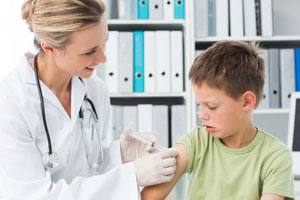Meet the main symptoms of childhood diabetes, to give a normal life to your small but has fallen prey to this disease.
Main symptoms of childhood diabetes
It is critical to recognize the symptoms of childhood diabetes, because early detection is everything in this and most of the diseases that affect children. If your child shows some signs of the list, make a prompt consultation with the pediatrician to make the necessary analysis.
 In our times, juvenile diabetes and adult sentences are no longer a life with prohibitions, but a condition that, being discovered early, it becomes much more bearable.
In our times, juvenile diabetes and adult sentences are no longer a life with prohibitions, but a condition that, being discovered early, it becomes much more bearable.
Causes of childhood diabetes
The type 1 diabetes mellitus manifests itself suddenly increasing frequency in with children under 5 years of age but can also occur in puberty and adulthood. Happens for a bad activity or failure on insulin , a hormone that is devoted almost exclusively to take blood glucose (what is known as blood sugar) and refer you to your final destination, as a fuel cell or storage.
When cells of the pancreas produce little or no insulin, or when you’ve carried a form of “resistance” and this hormone can not do his job, can be triggered in the body is a health condition called diabetes, manifesting itself with symptoms sometimes clear, and sometimes confusing, so we must pay attention particularly in young children.
The causes of diabetes can be as varied, and depend on each individual case. The most common are genetic inheritance, environmental factors (such as chemical contaminants and pesticides, particularly exposure to organochlorines and polychlorinated biphenyls, both organic-persistent), lifestyle and food (a recharged diet of bad fats and sugars, lack of exercise, obesity and others), autoimmune conditions, conditions the pancreas and then some.
Childhood diabetes symptoms to detect
Children in early stages or already present in type 1 diabetes mellitus presented probably the following:
– Increased appetite, while no weight loss, sometimes only in the extremities
– Increased physical and mental fatigue, moodiness as a result
– Common skin infections, gum and bladder
– Irritability, changes Sudden mood (especially babies and infants)
– Lethargy, lack of concentration, lack of focus
– Upset stomach, vomiting, frequent indigestion
– excessive production of urine, very often in visits to health or diaper use ( is known as “polyuria”)
– Tingling in the extremities, you notice the baby and not speaking child scratch and touch the hands and feet
– Have excessive thirst, for no apparent reason (is known as “polydipsia “)
– Blurred vision
For its part, the symptoms of type 2 diabetes in children and adults include:
– Frequent infections in the bladder, kidneys, skin and other areas
– Excessive fatigue
– Increased appetite
– increased thirst
– Increased urination
– Blurred vision
-Pain, numbness and tingling in the hands and feet
Control is key
This disease also present high levels of blood sugar, which can be easily measured at home with economic specialized equipment. It should also analyze (medical consultation and laboratory) one of the most common symptoms of diabetes in children and adults, which is ketoacidosis, which occurs when the body can not use glucose for fuel cell and begins to use stored fat, accumulating process residues (ketones) in the blood and urine, reaching toxic levels.
The ketoacidosis symptoms are high blood sugar, deep and rapid breathing, dry skin, fruity breath, vomiting, nausea and stomach pain.
Leave a Reply